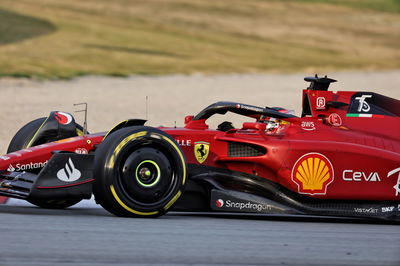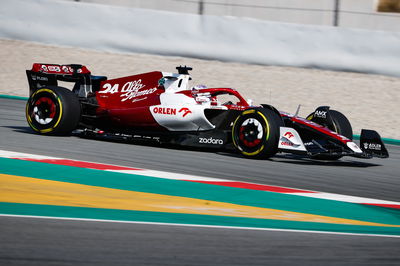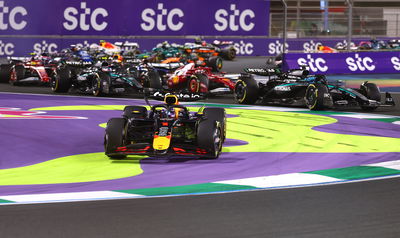‘Positive and negative’ - Will F1’s 2022 cars produce closer racing?
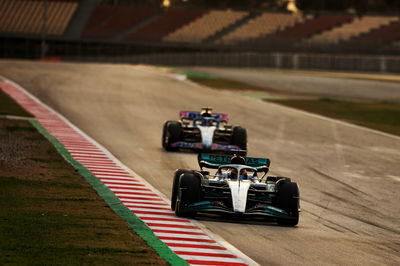
Dubbed as the biggest technical rules change in F1 in 40 years, scaled-back aerodynamics, bigger tyres and ground effect technology have been introduced with the aim of facilitating closer racing and making the sport more competitive.
The brand new cars hit the track in anger for the first time last week during the opening pre-season test at Barcelona, where the teams and drivers got their first real-world opportunity to test out whether the new regulations will have the desired effect.
Across the three days of action at the Circuit de Barcelona Catalunya, several drivers reported encouraging early feedback regarding the characteristics of F1’s new breed of cars.
“I've been following a few cars, and it seems like it's a little bit easier to stay behind,” said world champion Max Verstappen.
“At least you don't have this weird loss of downforce where suddenly you have a lot of understeer or massive oversteer.
“Of course, I don't expect it to be fully gone and that you can follow on the rear diffuser, because of the speeds we're still doing in an F1 car, but it all seems a bit more under control. The cars are fine.”
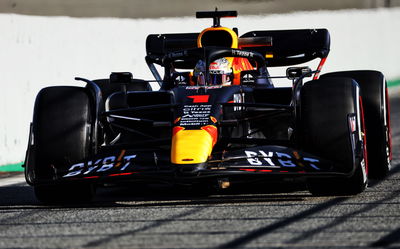
Ferrari driver Charles Leclerc echoed Verstappen’s comments that the regulations appear to have achieved what was intended in making it easier to follow a car ahead.
“It is quite interesting,” he said. “Because I'll say from three seconds to one second behind the car in front, you actually can follow closer.
“Then from one second to five-tenths I will say it's similar to the feeling I had last year.
“And then from five-tenths to extremely close, then this is much better than last year. It is nice, it's interesting. I mean, I'll have to do a few more laps behind a car, but it's looking good for now.”
His Ferrari teammate Carlos Sainz added: “I already felt some differences. It is pretty obvious already. And I'm relatively positive about it, and optimistic that it's I think going in the right direction.”
Alex Albon, who has returned to F1 on a full-time basis with Williams after spending the 2021 campaign on the sidelines as Red Bull’s reserve driver, described the improvement in following as a “nice surprise”.
“That’s been pretty surprising,” he explained. “It’s a nice surprise, and it’s something which takes a bit of getting used to.
“You gain almost a memory of what you can and can’t do when you’re a certain distance from a car, you learn how to back off, you learn the limits of following – and that’s kind of been recalibrated a little bit.
“I haven’t spent many laps behind other cars, but you can tell that it’s improved greatly. And that’s great for the sport. Hopefully, it will translate well.”
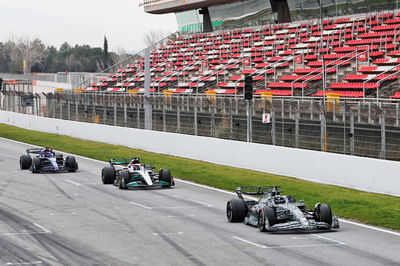
Williams teammate Nicholas Latifi was equally positive about the changes.
“I did actually have the opportunity to get behind a few cars and yeah, it’s definitely easier to follow,” he reported. “Without a doubt.”
However, the feedback has not all been positive. While it now appears easier to follow another car more closely, there are concerns that overtaking itself might not necessarily be easier.
After spending time following Lando Norris’ McLaren on the final day of running, George Russell was left concerned after noticing a “substantially” reduced slipstream effect.
“I think the following has been improved but the slipstream effect has been reduced quite substantially, so I don't really know,” said the Mercedes driver.
“You obviously need that delta in the straights to overtake because you can only overtake at the end of a straight and into a corner. We can follow closer but from what we have seen, the slipstream effect is definitely less effective. We will have to wait and see.
“I got right up behind Lando, I was a car-length or two behind him and didn't catch the straight, so that was slightly concerning so let's see.”
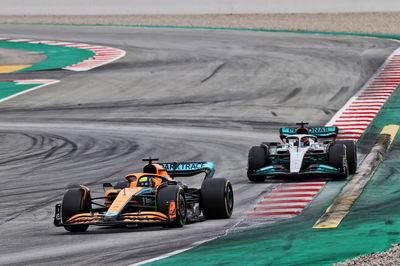
Norris agreed with Russell’s assessment but stressed F1 will need to wait until the season-opening Bahrain Grand Prix on March 20 to properly judge how the new rules will impact the racing this year.
“I think me and George had a perfect demonstration of it,” he added. "I didn't want to let him past while he was on a quick lap so I screwed him over and held him up a bit.
“The following in the corners is an improvement. How much exactly? It’s hard to know because you are always on different fuel levels and tyres and stuff. Maybe when there are three, four, five, six cars ahead then it could be quite different again.
“But with all this obviously comes the deficit of a slipstream effect and how much that is going to be helping us. We can follow closer but then the slipstream is worse so a positive and a negative from it. We don't know which is the bigger effect at the minute so we will have to see until the first race.”
Another factor to add into the equation is how Pirelli’s new 18-inch tyres will impact the racing. The Italian company has been working on the production of more durable rubber for this season that should enable drivers to push harder in the races and reduce the need to conduct as much tyre management as in previous years.
But there were mixed views from the drivers in Spain, with Aston Martin’s Lance Stroll reporting the behaviour was “very similar to in the past.”
While he acknowledged the tyres still degrade and overheat, Sainz was more positive, saying he could feel an improvement.
"I did quite a bit of testing last year and it looked like they are suiting well the new generation of cars,” he explained. “It looked like they at least allowed you to push bit more on them and a bit less overheating, a bit less degradation.
"It is still a tyre that degrades and overheats. But the scale, I feel like it's a bit better and the work done seems to start to pay off a bit."
